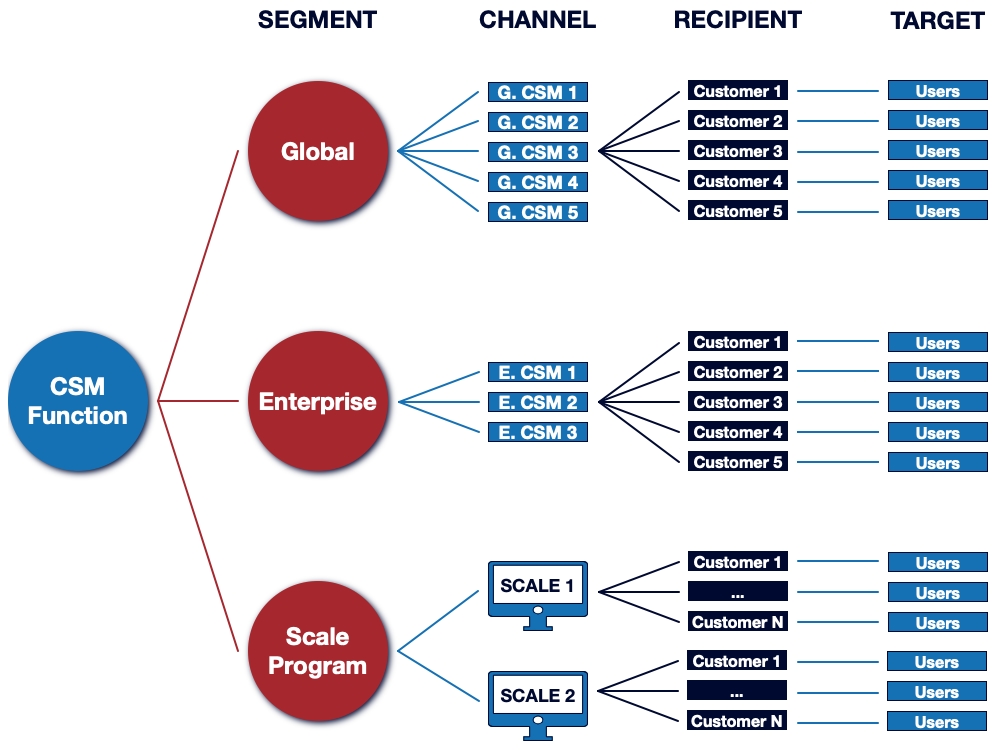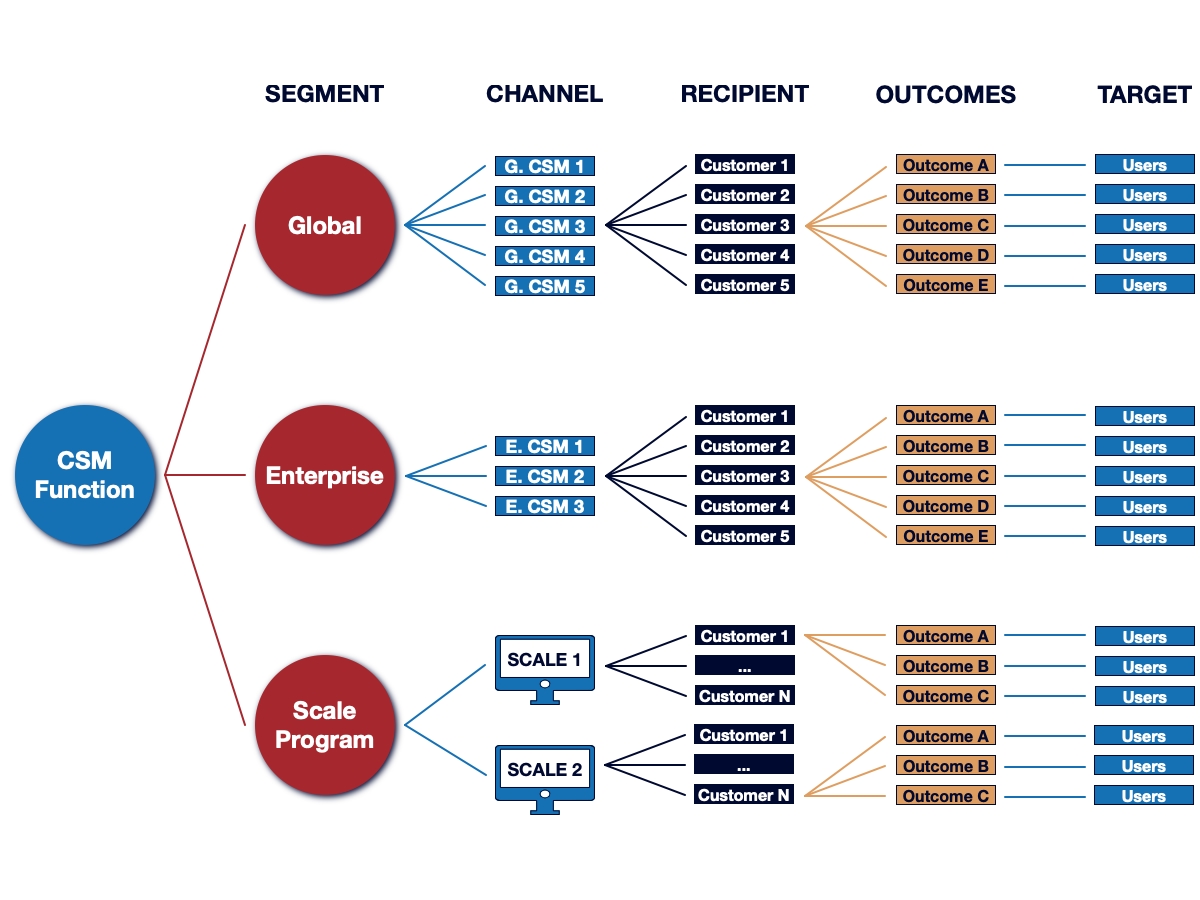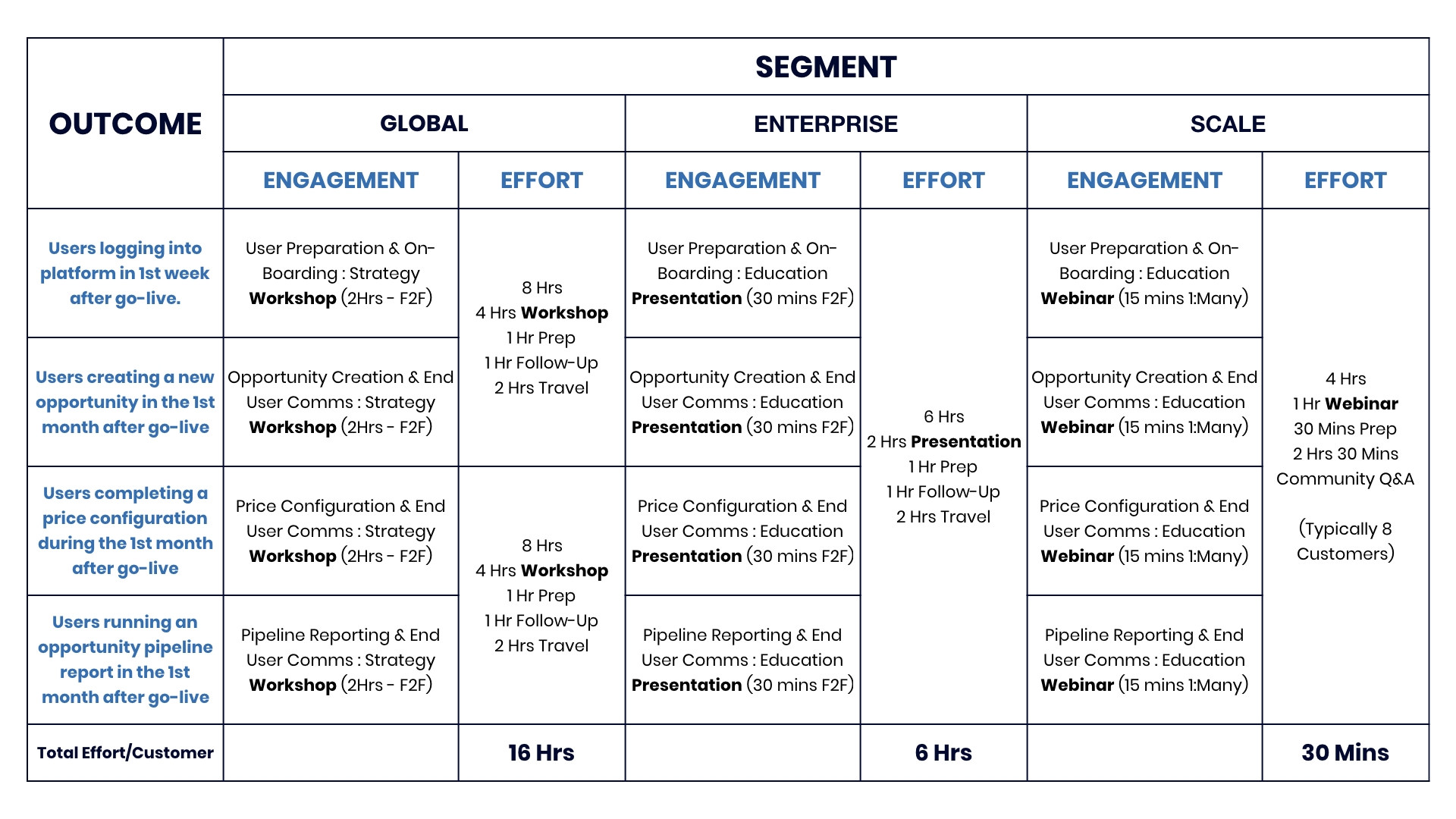So How Many More CSMs Do We Need?
Scaling any function is a challenge. As a team grows we need to find and hire great people, decide how to re-organise and re-focus as we grow, adjust to the challenges of managing ever larger numbers of people, and adapt our plans when things don’t turn out as we expected. A team may need to move from informal to formal processes, from turning to the person on their left to communicating across 1000’s of miles, from multiple ways of working to defined frameworks supported by playbooks and best practices.
The Lessons Of Nature
Nature is an expert at scaling and distribution. The structure of a tree, the system of arteries and veins in the human body and the extra-ordinarily efficient lungs of the blue whale are all highly optimised branching networks designed for a very specific purpose: distribution and collection.
The scaling challenge we face in customer success is illuminated by comparison to nature’s branching networks. Customer success teams need a mechanism that allows them to supply their customers with exactly the best practice guidance, information and support that they need, at the time of need, to ensure optimum outcomes from the use of their solution. Furthermore that mechanism needs to incorporate a feedback system. Just as the body has veins to return de-oxygenated blood to the heart, so customer success teams need a way to be sure that their customers are healthy and to consolidate input and learnings from across the customer base.
How then might we think about the use of branching networks to enable a customer success team to both:
- Efficiently distribute the consolidated and validated body of knowledge that comprises their customer success best practice libraries and framework;
- Collect and consolidate the emergent best practices, product feedback and common challenges of their customers?
We start by working back from the customer. Every customer has stakeholders: at least one, usually many and often 10,000’s all of whom are engaged with a vendor’s solution in some way. The majority will be users, people who simply work with the system to do their job: these are the people who interact with the use cases and so deliver the outcomes a solution is designed to provide. They represent the final part of the branching network and are the ultimate target of the efforts of a CS function.
A step back from the users we encounter the team at the customer charged with ensuring the success of the implementation and ongoing deployment. This will comprise a variety of people and more importantly a variety of roles such as the executive sponsor, the system administrator, the internal help-desk and so on. This team is responsible for the deployment and maintenance of the solution and for supplying the guidance, information and support their end users need to be successful users of the solution. This team is usually the recipient of most of the direct input provided by the customer success team to its customer base.
The next branch is either the customer success manager or the scale programme through which the customer’s deployment team are supported by the vendor. This is the primary channel through which information is passed to the customer and ensuring this is optimised for delivery and collection is vital. One step further back still we arrive at the segment to which that customer belongs (Global, Enterprise, Scale etc) before finally we arrive at the customer success function itself: the ultimate source of the consolidated knowledge, experience, information, process and procedures with which a company supports the success of its customers.
This is easy to illustrate in a simple graphic.

How Do We Execute On This Model?
This model can help us to create a scaling strategy. The introduction of customer outcomes and their use in this model is the key to unlocking the relationship between a company’s success content and the scalable deployment of that content as part of an overall strategy to deliver on customer success. To show this the graphic above is re-drawn to include outcomes.

Each of the customer’s desired outcomes will have a group of users who are engaged with the use case of the vendor’s solution leading to that outcome. Users will of course typically engage with multiple use cases and be in pursuit of multiple outcomes.
As an example, one desirable early outcome might be that every user has an active login and has demonstrated an ability to log onto the platform. In itself this is of little long term value to the customer but it is a critical first step towards high levels of value being delivered. Consequently, one piece of guidance that needs to pass along our network from the core CSM function to the right recipient in the customer team so that they can ensure it is correctly executed is the best practice approach to achieve this specific outcome. This is likely in this case to be a mixture of good change management practices, good communications and good system preparation and setup.
Having identified this early outcome the next step is to consider how this best practice should be delivered for each segment:
- For a client in the Global segment with a large and distributed user base this early outcome may be considered so important that it merits a specific session, perhaps a couple of hours that is part education on the best practice and part workshop to build the final strategy for this outcome with the customer;
- For the Enterprise segment this may also be delivered face to face but in this case as part of a session covering multiple best practices across several outcomes. The session may be purely educational with some time for Q&A but not include any of the workshop elements;
- Finally, in the Scale segment customers may receive an invitation to a webinar along with all the other new customers going live that month. During the webinar this is information is presented online with Q&A dealt with later in a moderated online community.
At this point it is worth examining a couple of interesting features of this example:
- Firstly we are seeking the same result for all customers: we would like their users to have a clear understanding of the benefits of the soon to launch solution, understand when and why it is happening and to be fully prepared to access the system on go-live day or as soon as possible thereafter;
- We are using the same best practice information in each case. The effort put in by each customer may differ based on the size of audience and the criticality of the solution to their business. However, they should all leverage similar input to do an appropriate amount of change management, communication and preparation.
The content is the same: what does differ by segment is the method of delivery and therefore the amount of effort required by the CSM team. This plays directly into our scaling strategy. The example in the table below using a Customer Relationship Management (CRM) solution looks at several scenarios that show how you can take this outcome focus into your segmentation strategy and engagement model. Furthermore it provides a method to size the customer success effort required.

I’ve talked before about the need to supply the customer with what they need, at the time of need, to enable them to focus on driving outcomes appropriate to their goals and position along your customer journey. In this context it’s worth examining two interesting features of this example:
- Assume you have a customer who has chosen not to deploy the price configuration tool mentioned in outcome 3. In both the Global and Enterprise segments you can adjust your engagement to drop the relevant workshop or presentation sessions thereby personalising the delivery of your best practice advice and guidance;
- This is not so easy for the Scale customers. They have to attend the webinar and either ignore the section on price configurator or watch along anyway, knowing it is not immediately relevant, and then drop it from their ongoing internal work with their users;
This example also shows how a well designed scale program characterised by 1:many delivery of content, online communities and automation can have huge efficiency benefits. For the customers in this segment you can:
- Reach multiple customers simultaneously, a significant time saving;
- Ensure a great experience by providing permanent access to material such as webinars
- Directly support customers post any form of 1:many delivery by using a “scale” CSM in an online community or other 1:many forums.
- Assemble frequently experienced issues into a reference body of knowledge that sits in this community or forum to deflect common queries
How Does This Inform Our Scaling Strategy?
This approach to scaling starts above all with clarity of customer outcomes: work that may need to be done before a scaling strategy can be designed. Next is deciding on a segmentation approach and how the distribution and collection activities of your CSMs and technology are best deployed into those segments for an optimised balance between delivery effectiveness and cost. At this point you have a scaling strategy. Having built this if you want to use this approach for sizing you can approximate the effort levels needed for each activity or groups of activity, factor in time for essential reactive work, time to build collateral such as webinars and of course overhead time and arrive at a solid mechanic for team sizing.